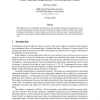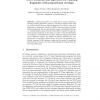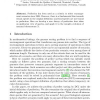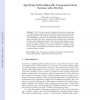REPLICATION
2010
13 years 9 months ago
2010
RECOMB
2010
Springer
13 years 9 months ago
2010
Springer
Chaining fragments is a crucial step in genome alignment. Existing chaining algorithms compute a maximum weighted chain with no overlaps allowed between adjacent fragments. In prac...
RECOMB
2010
Springer
13 years 9 months ago
2010
Springer
Background: Genomic rearrangements have been studied since the beginnings of modern genetics and models for such rearrangements have been the subject of many papers over the last ...
RECOMB
2010
Springer
13 years 9 months ago
2010
Springer
Abstract. Perfection has been used as a criteria to select rearrangement scenarios since 2004. However, there is a fundamental bias towards extant species in the original definitio...
RECOMB
2010
Springer
13 years 9 months ago
2010
Springer
In comparative genomics studies, finding a minimum length sequences of reversals, so called sorting by reversals, has been the topic of a huge literature. Since there are many mini...
RECOMB
2010
Springer
13 years 9 months ago
2010
Springer
(Motivation) Tree reconciliation is an approach that explains the discrepancies between two evolutionary trees by a number of events such as speciations, duplications, transfers an...
BICOB
2010
Springer
13 years 9 months ago
2010
Springer
Fold recognition is a key problem in computational biology that involves classifying protein sharing structural similarities into classes commonly known as "folds". Rece...
ASM
2010
ASM
13 years 9 months ago
2010
ASM
ASM
2010
ASM
13 years 9 months ago
2010
ASM
TCSB
2010
13 years 10 months ago
2010
Abstract. The process through which disordered components spontaneously arrange themselves into patterns is called self-assembly. Molecular self-assembly describes the process by w...






